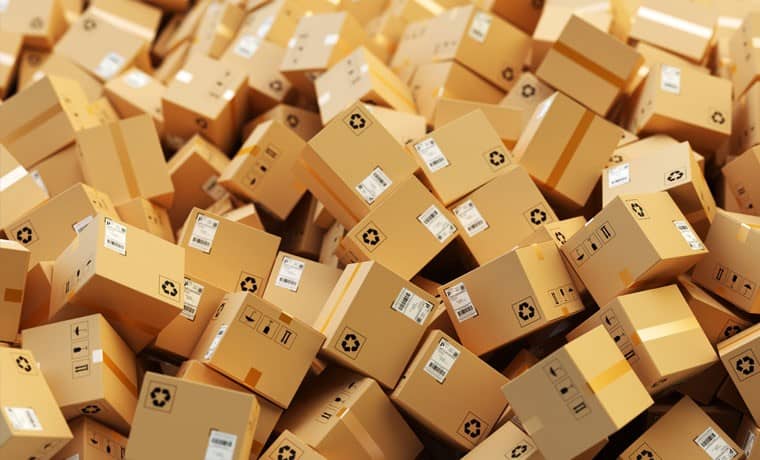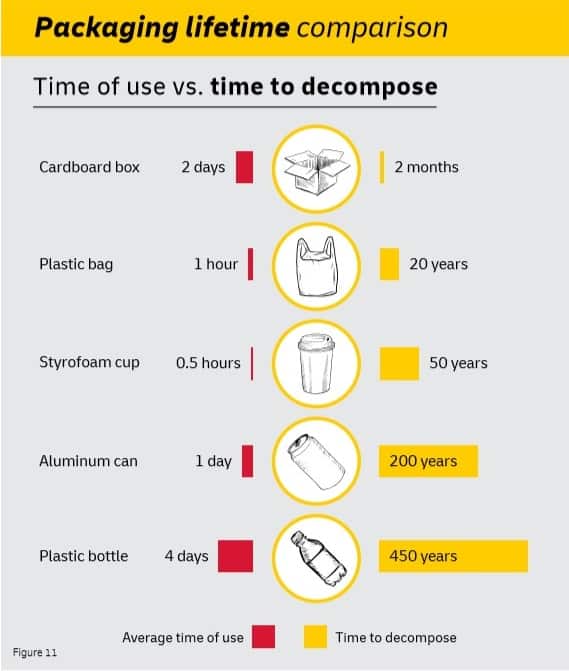Logistics is one of the sectors where technology has opened the door for its systems questioning and redesigning. Focused on driving change towards more effective and sustainable processes that respond to changes in the market.
The fast, scalable and complex growth of today’s logistics processes, especially those focused on e-commerce and omnichannel sales, propel “rethinking” the design of packaging solutions, to meet the new demands of price and efficiency.
Packaging is undergoing a transformation in the face of digitalization. Its traditional functions as a facilitator of protection, transportability and communication, although they are still essential, must adapt to the new needs of brand experience, security / monitoring, connectivity and environmental emergency, which require new solutions to solve them.

Sustainability as the main change axis.
An increasingly demanding consumer looks for a packaging that is easy to use, transparent in the information provided and of uncomplicated disposal. While companies look for packaging that enhances their brand and disseminates their values and business culture.
Concern for the environment situation becomes the point in which both stakeholders confer, both interested in reinforcing responsibility with the planet, either as part of the brand strategy or as a consumer requirement towards brands.
The optimization of packaging, its materials and the application of new technologies such as the Internet of Things, can mean the paradigm shift that increases efficiency and productivity. Turning packaging into an intelligent, efficient solution that benefits the logistics chain and at the same time is more sustainable and enhances the consumer experience.
https://www.industrialpackaging.com/blog/the-iot-and-packaging-whats-trending
Smart packaging that generates experiences while providing solutions.
2020 will be the scenery for Smart Packaging development. Augmented Reality (AR) will have great relevance for its application as part of the brand experience, transparency and sustainable mission of companies in commitment to their customers and the environment.
An AR-enabled packaging has infinite scalability, allows the consumer to be educated about the environmental impact of the packaging and / or product and encourages the ecological point of view. With the help of a smartphone, packaging can be converted into a digital discovery channel that increases transparency about the product. Creating significant moments, while stimulating consumer loyalty and increasing the purchase decision.
Augmented reality allows to tell immersive stories, to surprise the user, but also to inform and instruct and reinforce brand values. Implementing this technology in the packaging strategy is a smart alternative for companies. It can mean the first step to get prepared for the introduction of 5G, which will increase the speed and power of smart devices, triggering great application opportunities.
Cloud Labelling a technological solution also for small businesses.
Within the packaging trends that we will see during the next year, Cloud Labelling will be an opportunity where companies of all sizes can benefit.
A labelling management system is not a new solution. But with processes digitalization, the arrival of the cloud and accessible software, becomes a solution with great benefits to companies of all sizes, given that large budgets are not required.
Example: Cloud Label Service is a subscription that gives organizations the freedom and flexibility to easily manage the label’s life cycle. It allows to collaborate with suppliers and share label templates to ensure that stakeholders always have the correct and updated label.
Packaging and the need for transformation in the face of e-commerce.
E-commerce is here to stay, so the packaging world presents interesting challenges for both companies and consumers.
Amazon has had great influence in changing the online shopping world. It has set the innovation pace for other companies that have to seek to respond to the changes caused by the e-commerce giant. Packaging is no exception, Amazon works to ensure that the product packaging is strong and protective, while sustainable.
But the reality is that today, many of the packaging used for e-commerce are of inappropriate materials or are delivered with excessive packaging. It is necessary for companies to find suitable packaging solutions, aware of the waste and environmental pollution they generate.
One of the possible solutions is simple, the use of paper and cardboard. These are ideal in aspects of sustainability, as well as for the AR and IoT solutions integration. Cardboard is likely to be more convenient for primary and secondary packaging, for last-mile deliveries, as well as local conversion operations.

Fuente: DHL “Rethinking Packaging” Trend Report.
Adapting to the continuous changes of the market requires new ways of thinking to create solutions that endure and set the guidelines for continuous innovation. Packaging is changing and e-commerce will set the course for solutions, followed by a demanding consumer in need for instant satisfaction, transparency and causes that matter, such as sustainability. This last one is today the centre of all actions where innovation and technology play a key role in market education and optimization of logistics solutions.


